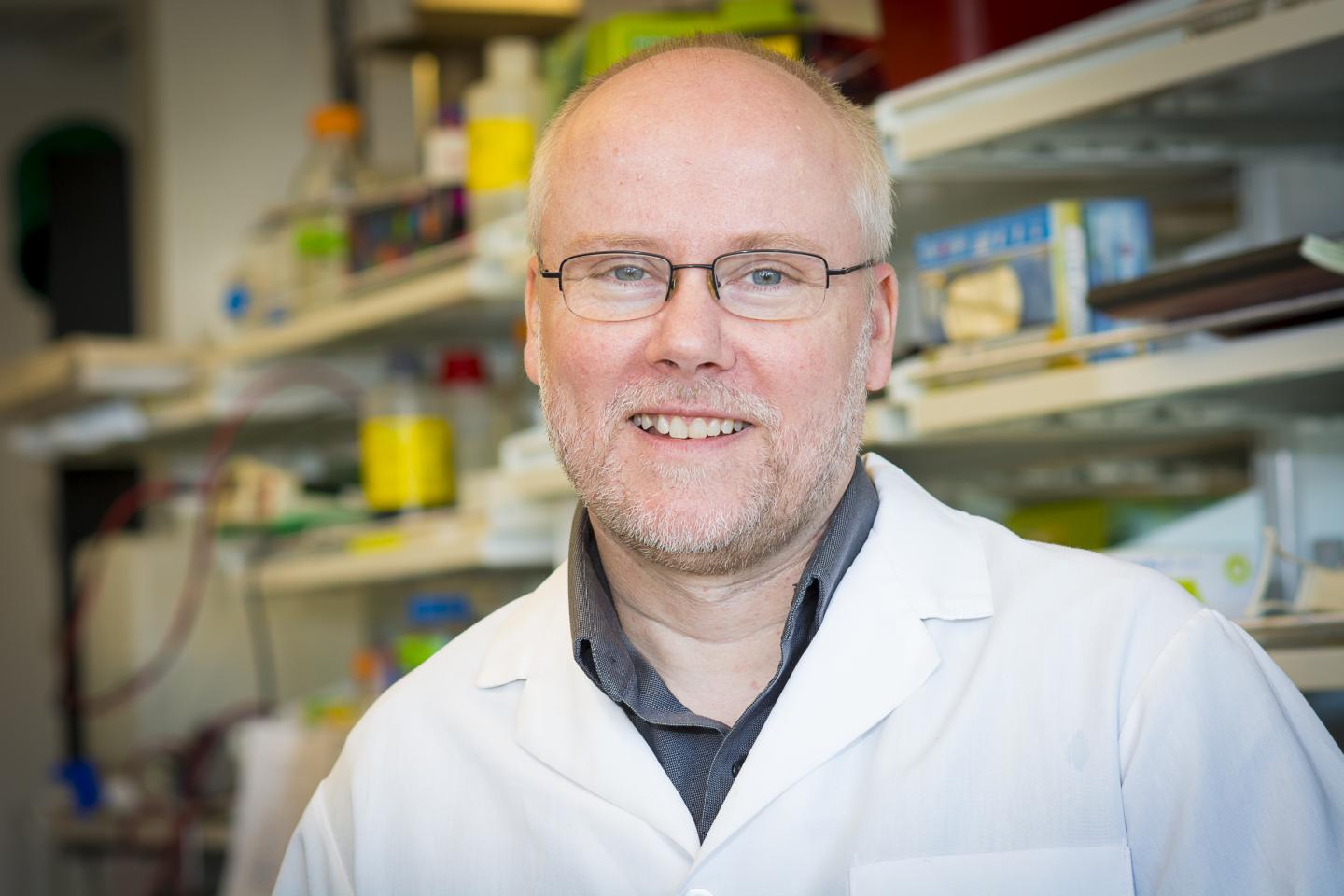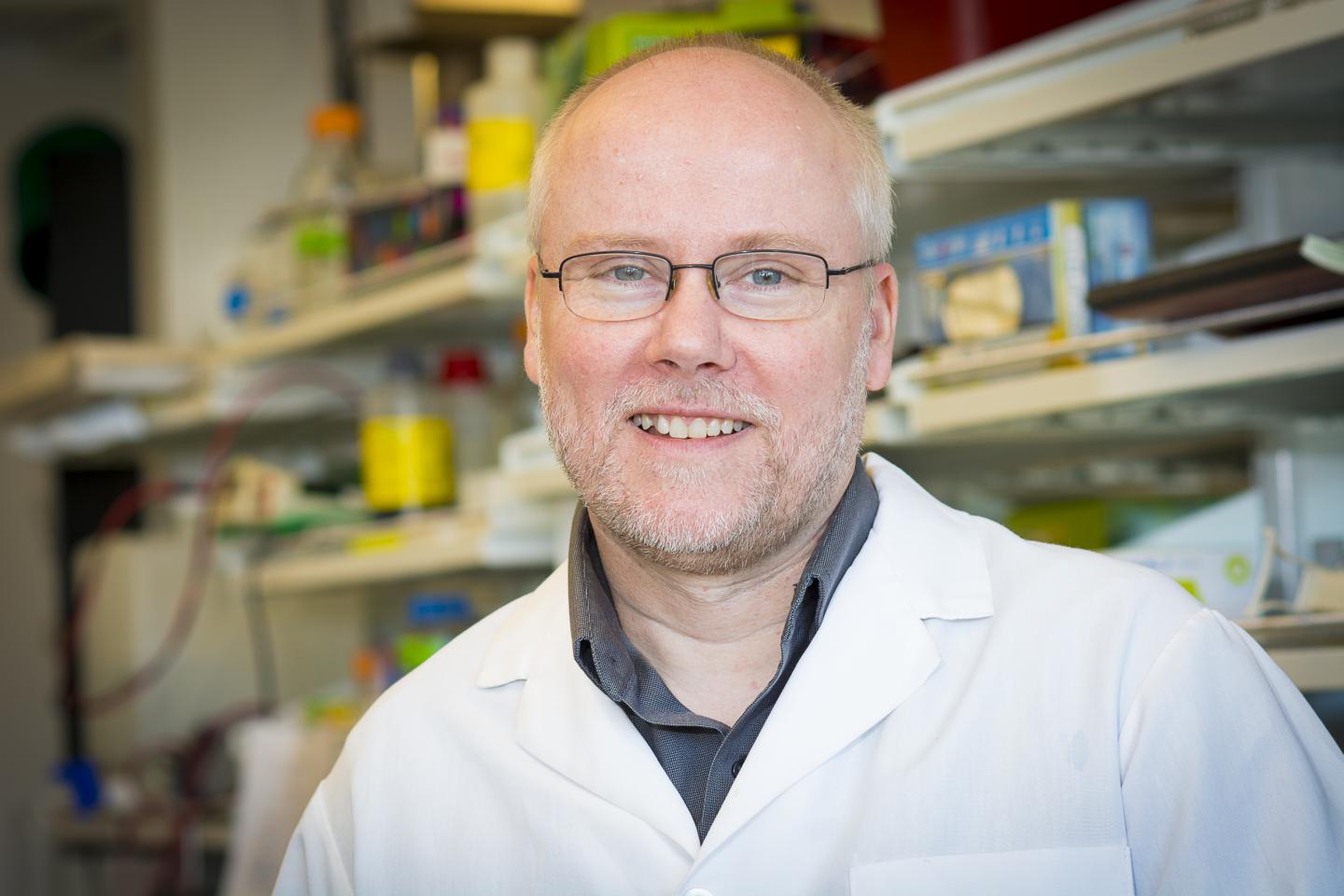
Credit: Washington State University Spokane
SPOKANE, Wash. – A Washington State University researcher has developed a way to reduce the development of cancer cells that are an infrequent but dangerous byproduct of gene therapy.
Grant Trobridge, an associate professor of pharmaceutical sciences, has altered the way a virus carries a beneficial gene to its target cell. The modified viral vectors reduce the risk of cancer and can be used for many blood diseases.
Trobridge and his team report their development in Scientific Reports, an online open-access journal produced by the Nature Publishing Group. The team is translating their findings into a stem cell gene therapy to target a life-threatening immunodeficiency in newborns called SCID-X1, also known as "Boy in the Bubble Syndrome."
Gene therapy holds potential for treating genetic diseases by replacing defective genes with repaired ones. It has shown promise in clinical trials but has also been set back by difficulties delivering genes, getting them to work for a long time and safety issues. A joint French and English trial, for example, successfully treated 17 out of 20 patients with SCID-X1 only to see five of them develop leukemia.
Trobridge and his colleagues are using a vector developed from a foamy retrovirus, so named because it appears to foam in certain situations. Unlike other retroviruses, they don't normally infect humans. They also are less prone to activate nearby genes, including genes that might cause cancer.
Retroviruses are a natural choice for gene therapy because they work by inserting their genes into a host's genome.
With an eye toward making the vector safer, the Trobridge team altered it to change how it interacts with a target stem cell so it would insert itself into safer parts of the genome. They found that it integrated less often near potential cancer-causing genes.
"Our goal is to develop a safe and effective therapy for SCID-X patients and their families," said Trobridge. "We've started to translate this in collaboration with other scientists and medical doctors into the clinic."
He predicted that the therapy could be ready for clinical trials within five years.
###
The work is funded by the National Institutes of Health's National Institute of Allergy and Infectious Diseases. It is in keeping with WSU's Grand Challenges, a suite of research initiatives aimed at large societal problems. The work is particularly relevant to the Sustaining Health challenge of changing the course of disease.
Media Contact
Grant Trobridge
[email protected]
509-368-6564
@WSUNews




